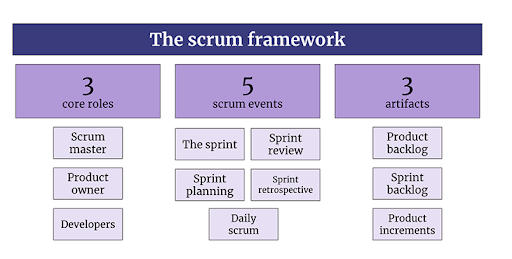In the era of data-driven decision-making, the Data Lakehouse paradigm has emerged as a promising solution, bringing together the best of both data lakes and data warehouses. By combining the scalability of data lakes with the data management features of warehouses, Data Lakehouses offer a highly scalable, agile, and cost-effective data infrastructure. They provide robust support for both analytical and operational workloads, empowering organizations to extract more value from their data.
In our previous articles, we’ve explored the concept of Data Lakehouses in depth. Data Lakehouses: The Future of Scalable, Agile, and Cost-Effective Data Infrastructure laid the groundwork by highlighting the key business benefits of lakehouses. A New Era of Data Analytics: Exploring the Innovative World of Data Lakehouse Architectures took a closer look at the architectural aspects of lakehouses, while Delta, Hudi, and Iceberg: The Data Lakehouse Trifecta focused on the three main lakehouse solutions: Delta Lake, Hudi, and Iceberg.
As we delve into the world of Data Lakehouses, one technology that stands out for its potential is Apache Flink. Renowned for its superior stream processing capabilities, Flink can handle both batch and real-time data, making it a compelling choice for implementing Data Lakehouses. Furthermore, it boasts high processing speeds and fault tolerance, features that align well with the demands of modern, data-intensive applications.
In this article, we aim to explore the intersection of Apache Flink and Data Lakehouses. We will delve into the capabilities of Flink, compare it with other technologies like Apache Spark, and illustrate how it can be leveraged in the context of a Data Lakehouse. By providing practical examples, we hope to illustrate the potential of Flink in this exciting realm and offer insights to those considering its adoption. Let’s embark on this journey to understand how Flink could be a game-changer in the Data Lakehouse landscape.
A Closer Look at Apache Flink
Apache Flink, an open-source project under the Apache Software Foundation, is a potent stream-processing framework. With its ability to proficiently manage both real-time and batch data processing, Flink has made a significant impact in the Big Data landscape. Its unique capabilities, such as fault tolerance and event time processing, enable it to deliver fast and accurate results, marking it as a standout contender in the data processing realm.
Although we won’t dive deep into the intricacies of Flink’s architecture, it’s important to highlight its key features and how they differentiate it from other big data processing systems. Flink operates under a unique principle known as “Stream-Batch Unification,” which treats batch processing as a subset of stream processing. This allows Flink to manage bounded (batch) and unbounded (stream) data with equal proficiency.
The architectural design of Flink includes several vital components. The JobManager, equivalent to the master node in other distributed systems, orchestrates the distributed processing. TaskManagers, the worker nodes, are responsible for carrying out tasks, while the Source function allows data intake, and the Sink function facilitates results output. This structure allows Flink to effectively handle massive data quantities, scaling out as needed.
When compared to other big data processing frameworks, Flink’s unique strengths become apparent. Its high-speed and low-latency processing capabilities, even in large-scale operations, are noteworthy. Flink also provides strong consistency and fault tolerance through its asynchronous checkpointing mechanism. Moreover, its support for event time processing and windowing functions makes it particularly suitable for intricate event processing and time-series analysis.
In the forthcoming section, we will delve into the role of Flink within Data Lakehouses and benchmark it against Apache Spark, another leading big data processing framework.
The Role of Apache Flink in Data Lakehouses
As organizations increasingly adopt the data lakehouse paradigm, the need for an efficient, flexible, and robust processing engine becomes paramount. Apache Flink, with its unique architecture and capabilities, is well-positioned to fill this role.
The data lakehouse model seeks to bring together the best attributes of data lakes and data warehouses. It needs to handle vast volumes of structured and unstructured data, provide real-time insights, and offer robust data governance. Flink’s architecture and features align remarkably well with these requirements.
Flink’s “Stream-Batch Unification” principle allows it to efficiently process both real-time (unbounded) and historical (bounded) data. This is particularly important in a data lakehouse setup, where real-time data ingestion and analysis can coexist with batch processing jobs. The high throughput and low-latency processing capabilities of Flink also enable the delivery of timely insights, a crucial aspect for data-driven decision-making.
Furthermore, Flink’s fault tolerance mechanism provides data consistency and reliability, critical for ensuring data integrity in a lakehouse environment. Its event time processing capability, in conjunction with windowing functions, enables sophisticated analytical operations, including complex event processing and time-series analysis. This is essential for extracting valuable insights from the data stored in a lakehouse.
In essence, Flink’s ability to handle high volumes of data, process real-time and batch data efficiently, and provide reliable and consistent data processing, aligns perfectly with the requirements of a data lakehouse. In the next section, we will explore how Flink stands against Apache Spark, another prominent data processing framework, in the context of data lakehouses.
Flink vs. Spark: A Comparative Analysis in the Data Lakehouse Context
In the big data processing landscape, Apache Spark has long been a front-runner, known for its versatility and efficiency. However, when it comes to implementing data lakehouses, Apache Flink presents a compelling case with its unique attributes.
One of the key distinctions between Flink and Spark lies in their approach to data processing. Spark operates primarily as a batch processing system, with streaming capabilities built on top of its batch engine. In contrast, Flink is designed as a true streaming engine, with batch processing treated as a special case of streaming. This makes Flink more adept at handling real-time data, a critical aspect in many data lakehouse use cases.
Flink’s event-time processing is another feature that gives it an edge over Spark. While Spark also supports event-time processing, Flink’s handling of late events and watermarks is more sophisticated, which is crucial for ensuring accurate real-time analytics.
In terms of fault tolerance, both frameworks offer robust mechanisms. However, Flink’s lightweight asynchronous checkpointing mechanism causes less performance impact compared to Spark’s more resource-intensive approach.
Despite these differences, it’s important to remember that the choice between Flink and Spark isn’t always a zero-sum game. Each has its strengths and is better suited to certain scenarios. A comprehensive understanding of their capabilities can help organizations make the best choice for their specific data lakehouse needs. In the following section, we’ll present some practical examples of implementing data lakehouses with Flink.
Practical Implementation of Data Lakehouses With Apache Flink
Understanding Apache Flink’s capabilities within a data lakehouse setup is greatly enhanced with practical examples. In this section, we’ll discuss typical implementations and provide code snippets to give a clearer picture of how Flink can be utilized within a data lakehouse environment.
Consider a data lakehouse architecture where Flink serves as the real-time data processing layer. It can consume data from diverse sources, such as Kafka or IoT devices, process it in real time, and store it in the data lakehouse for further use. The processed data can be directly channeled into real-time dashboards or used to trigger alerts.
Here’s a simplified Flink code snippet demonstrating data ingestion from Kafka, processing, and writing the results to a Sink:
// Create a StreamExecutionEnvironment
StreamExecutionEnvironment env = StreamExecutionEnvironment.getExecutionEnvironment();
// Create a Kafka source
FlinkKafkaConsumer<String> kafkaSource = new FlinkKafkaConsumer<>(
"topic-name",
new SimpleStringSchema(),
kafkaProperties
);
// Add the source to the environment
DataStream<String> stream = env.addSource(kafkaSource);
// Process the data
DataStream<String> processedStream = stream.map(new ProcessingFunction());
// Write the processed data to a Sink (e.g., HDFS)
StreamingFileSink<String> sink = StreamingFileSink
.forRowFormat(new Path("hdfs://output-path"), new SimpleStringEncoder<String>("UTF-8"))
.build();
processedStream.addSink(sink);
// Execute the Flink job
env.execute("Flink Data Lakehouse Job");In the code above, we’ve ingested data from a Kafka topic, processed it using a hypothetical ProcessingFunction(), and finally written the processed data to a Hadoop Distributed File System (HDFS) sink. This example demonstrates how Flink can serve as an efficient data processing layer within a data lakehouse.
Consider a use case in a retail business where Flink processes real-time customer activity data and feeds the insights into the lakehouse. These insights can then be utilized to customize customer experiences, adjust inventory, or enhance marketing tactics.
Similarly, a financial institution could leverage Flink to process real-time transaction data. By executing complex event processing with Flink, the institution can detect fraudulent activities as they occur and take immediate action. The processed data, once stored in the lakehouse, can be used for generating detailed reports and further analysis.
Furthermore, Flink’s compatibility with popular storage systems like HDFS, S3 and databases like Cassandra or HBase ensures easy integration with existing data infrastructure. Its ability to interoperate with other big data tools, such as Hadoop and Spark, allows organizations to maximize their existing technology investments.
In the concluding section, we’ll encapsulate Flink’s potential in data lakehouse implementations and discuss why it’s a technology worth considering for your data strategy.
Case Studies: Successful Implementations of Apache Flink in Data Lakehouses
To further illustrate the practical usage of Apache Flink in data lakehouse architectures, let’s delve into a few real-world case studies where organizations have successfully leveraged Flink’s capabilities.
- Alibaba Group: Alibaba, the Chinese multinational conglomerate, uses Flink extensively for various real-time computing scenarios in its data lakehouse. They use Flink for real-time search indexing, online machine learning, and personalized recommendations. By adopting Flink, Alibaba has been able to process billions of events per day in real-time, significantly improving their business agility and customer experience.
- Uber: Uber uses Flink for processing real-time and historical data to power applications like dynamic pricing and supply positioning. Flink’s ability to unify batch and stream processing and its robust fault tolerance mechanisms are some of the key reasons why Uber chose Flink. This has enabled Uber to deliver more accurate, real-time responses to market changes.
- Netflix: Netflix uses Flink as part of its data lakehouse to process billions of events daily for real-time analytics, anomaly detection, and machine learning. Flink’s ability to handle massive scale and its sophisticated windowing functions have proven invaluable to Netflix’s data strategy.
These examples showcase Flink’s potential in data lakehouse setups and how different businesses have capitalized on its unique strengths. As organizations continue to search for robust, scalable, and versatile data processing tools for their data lakehouses, Apache Flink emerges as a strong contender. In the final section, we’ll summarize the potential of Flink in data lakehouse implementations and discuss why it’s a technology worth considering.
Conclusion: Why Apache Flink Is a Compelling Choice for Data Lakehouses
In this era of data-driven decision-making, the importance of a robust, efficient, and versatile data infrastructure cannot be overstated. The data lakehouse concept, which combines the strengths of data lakes and data warehouses, has emerged as an attractive solution for managing complex and diverse data workloads.
Apache Flink, with its unique architecture and capabilities, stands out as a promising technology for implementing data lakehouses. Its ability to handle both real-time and batch processing, robust fault tolerance, and event time processing capabilities aligns remarkably well with the requirements of a data lakehouse.
Moreover, compared to other popular data processing frameworks like Apache Spark, Flink’s true streaming nature and sophisticated handling of event time and watermarks offer a significant advantage, particularly for use cases requiring real-time insights and accurate event processing.
The practical examples and case studies we discussed highlight the flexibility of Flink in accommodating diverse data workloads and its potential to deliver substantial business value. Whether real-time customer activity analysis in retail, fraud detection in financial transactions, or powering real-time machine learning applications, Flink is proving its worth in varied scenarios.
In conclusion, as organizations continue to evolve their data strategies and seek to extract more value from their data, Apache Flink presents a compelling case for consideration. Its alignment with the data lakehouse model, coupled with its unique strengths in handling complex data processing tasks, makes it an exciting technology for the future of data infrastructure.
Source link






Leave a Reply